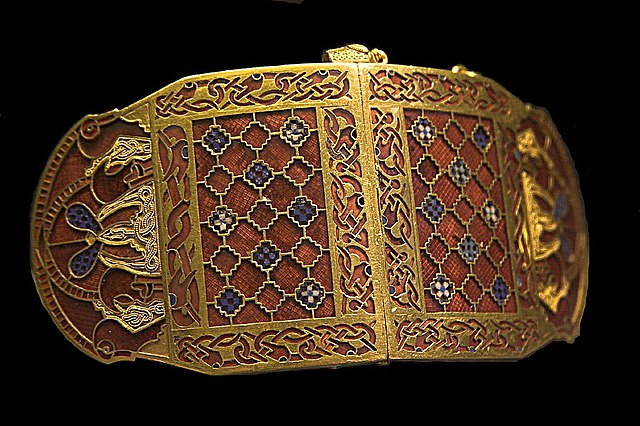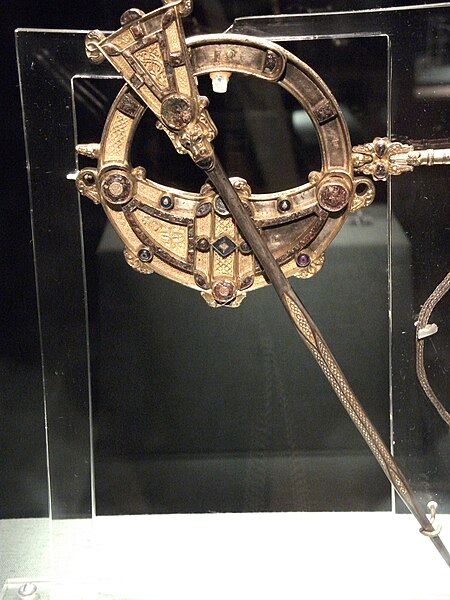Migration Period art denotes the artwork of the Germanic peoples during the Migration period. It includes the Migration art of the Germanic tribes on the continent, as well the start of the Insular art or Hiberno-Saxon art of the Anglo-Saxon and Celtic fusion in Britain and Ireland. It covers many different styles of art including the polychrome style and the animal style. After Christianization, Migration Period art developed into various schools of Early Medieval art in Western Europe which are normally classified by region, such as Anglo-Saxon art and Carolingian art, before the continent-wide styles of Romanesque art and finally Gothic art developed.
Shoulder-clasps from the 7th century Anglo-Saxon ship burial at Sutton Hoo. Alternate view. British Museum.
Germanic fibulae, early 5th century
Purse lid from Sutton Hoo, c. 625
Tara Brooch, front view, early 8th century
The Migration Period, also known as the Barbarian Invasions, was a period in European history marked by large-scale migrations that saw the fall of the Western Roman Empire and subsequent settlement of its former territories by various tribes, and the establishment of the post-Roman kingdoms.
A Migration Period Germanic gold bracteate depicting a bird, horse, and stylized human head with a Suebian knot
Slavic fibula brooch made of copper dating back to the Migration Period, c. 600–650 AD






